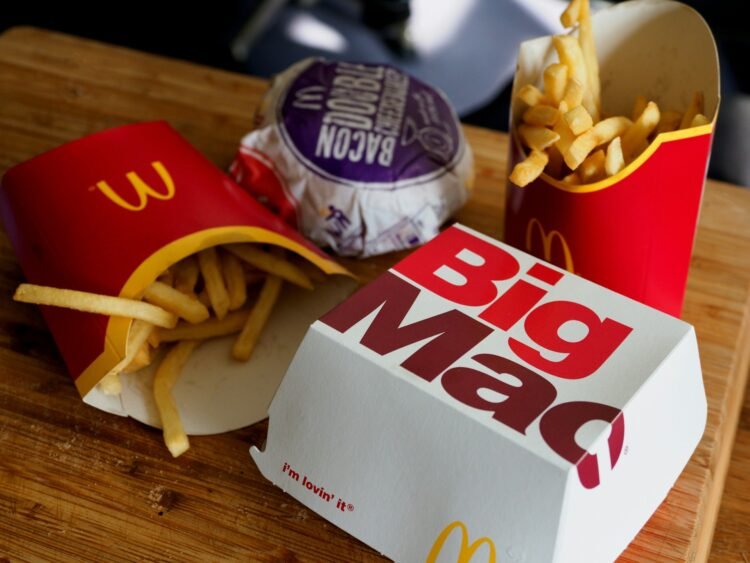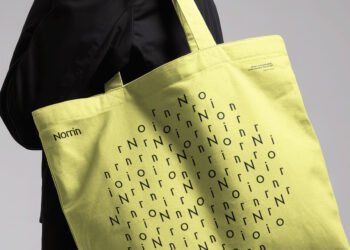For some serious insight into the challenges facing grocery packaged goods, the Barron’s recent interview with Robert Moskow is an important read. One of the points made in the interview is that packaged goods’ focus on competing with own-label grocery brands seems to push a lot of buttons, except for innovation. Packaged goods seem to be fighting fights of the past rather than focusing on the future, in which packaged goods brands can win. Packaged goods brands are morphing themselves into health food offerings, which is probably a losing battle. These efforts are “… often defensive more than offensive.”
In the meantime, grocery own-brands have spent resources vastly improving their quality. Observers of Amazon’s grocery travails seem to miss the remarkable renovation of its 365 brand.
Innovation and renovation are the lifeblood of a brand. They are investments not costs. Brands frequently alert us that a recent offering is “New and Improved!”
This article is part of Branding Strategy Insider’s newsletter. You can sign up here to get thought pieces like this sent to your inbox.
Brands stay relevant and current through “news” – that is, tell me about the interesting things you are doing and offering. News is key because news generates frequency. News – any way you receive that news – moves a customer through the door or onto the website, tapping the app, or asking ChatGPT, changing customer behaviors and attitudes. Tell customers what is new and what is different. For people to change their behavior with your brand, the brand must change. Innovation and renovation are change. For people to change their behavior, the brand must help them learn something new. Learning something new, something surprising, something delightful, and something unique will generate behavior change. Continuous renovation and innovation are the imperatives for success. Product and service renovation and innovation are both essential to enduring profitable growth.
When my consulting partner Larry Light and I were embedded in McDonald’s for the 2003-2005 turnaround, innovation and renovation were essential. Although most people remember the birth of the slogan ”i’m lovin’ it,” the facts are that enormous renovation efforts went into restoring a passion for product quality. Previous leadership, which had sent McDonald’s stock price down to $12, cut resources for product and service quality renovation and innovation. A renewed focus on core product quality led to improvement renovations in: the taste of the burger through new seasoning and improved cooking and holding procedures; better buns with a return to proper toasting of the buns; new equipment and procedures for serving better quality food; improving the quality of the coffee (this was before McCafé came to the US).
In response to criticism that McDonald’s did not have any “nutritious” options on the menu, the iconic new product introduction of salads endorsed by Paul Newman, served with Newman’s Own all-natural salad dressing, helped to launch the message that McDonald’s is relevant. (As an aside, at no point were we considering a “health food” positioning, although there was pressure to do so. Such a stance would have been unbelievable, destined to backfire. But McDonald’s could show that its offerings could be part of an overall healthy diet. It is unfortunate that packaged goods brands are rushing to become what they can never become.)
Children’s nutrition, a wedge issue, became a rallying cry for including milk, mineral water, and Sunny Delight orange juice in Happy Meals. Chicken McNuggets were improved.
Our McDonald’s work included the revised, compelling brand purpose: “to be our customers’ favorite place to eat and drink.” To be the customers’ favorite brand within the customers’ competitive set required a focus on customers’ changing behaviors. Building brand favoritism meant learning how changed customer attitudes and behaviors altered customers’ perspectives of McDonald’s. People were not visiting McDonald’s as often. McDonald’s wanted favoritism leading to frequency.
All of the McDonald’s innovations and renovations had the above purpose statement as a North Star. This meant that McDonald’s would need to improve – renovate – its new product development procedures. Instead of creating items that were reactions to executive feelings, such as “Our stores require a new chicken sandwich.” The new approach began with customer needs and problems.
Innovation and renovation do not work in a vacuum; they must reflect the brand’s purpose and the brand’s promise.
A great example of innovation and renovation is Crowne Plaza hotels, a brand from IHG. Crowne Plaza had established itself as a hotel for business travelers. Travelling on business is not always the giddy vision of an executive with an expense account wining and dining away the hours. Sure, ads show lovely people at a bar with an umbrella drink. However, business travelers have work to do.
Business travel has challenges. A hotel room can make a business traveler feel relaxed and rejuvenated or run over and roughed up. A hotel room can be conducive to work if designed properly.
We worked with IHG for years. We were pleased to participate in and support the brand work being accomplished across all of IHG’s hotel brands. Crowne Plaza was the first brand to work with us on redefining its purpose and promise and then activating these in Crowne Plaza hotels.
Crowne Plaza identified a specific target: The Striver who travels for business to reach personal goals. The Striver is ambitious, self-directed, positive, and has a well of inner strength. Strivers want a hotel that affirms personal success while helping physical and mental restoration so the Striver can keep on keepin’ on, as it were. Strivers wanted comfort, relaxation, and the ability to be extremely productive in their rooms.
The hotel room should be a means of making the business trip easier. The hotel room should be conducive to work while delivering a sense of calm. If you wanted a place where you could work productively without that feeling of being boxed in, without the jail-cell feeling, Crowne Plaza had you covered. Crowne Plaza must be the best hotel for traveling for success.
Once the Crown Plaza purpose and promise were agreed upon, the brand team needed to develop innovations that supported and delivered the brand promise for these ambitious travelers. This was no small task. The work required a rethink and redesign of the hotel room.
Business travelers have specific needs and problems while they are on the road. After reviewing and synthesizing the IHG knowledge base, the brand team created a blueprint for a room design more conducive to in-room work, productivity, ease, calm, and post-work relaxation.
Most hotel rooms are the same for everyone, with relevant, different benefits based on the size of the room and amenities such as extra plugs, a mini fridge, or a fax machine. Price is a feature, not a benefit. The brand team wanted to create a room design, from scratch, in which business travelers felt so comfortable that they could actually be more productive while working. It meant restructuring the room traffic pattern, the furniture, the zones, the lighting, the outlets, and the noise abatement.
All of these changes had to be designed as affordable-to-build: hotel owners may have hotels with 300 rooms. If, for example, a room redesign costs U.S. $10,000, multiply that by half or 150 business rooms per hotel. The total sunk cost for an owner would be U.S. $1.5 million for each renovated business hotel room. Now, imagine the cost when you are considering re-imaging 300 rooms or an entire hotel.
Watching business travelers visit sample hotel rooms was eye-opening. For example, a business traveler enters a room and first plugs in their mobile phone. A business traveler does not feel that she or he has checked in until the phone is plugged into an outlet. That outlet must be immediately visible and reachable without performing gymnastics.
The design company wanted a seamless, new-age room environment. The first design go-rounds were the design firm’s dreams, not the Strivers’ desires. The design firm did not create the original designs with the brand purpose and promise in mind. For example, the design firm created rooms where there were no desks (ugly, common, irrelevant), but instead placed chaise lounges with outlets on the sides, discreetly hidden by fabric. When entering the desk-less rooms, business travelers’ immediate words were, “Where is the outlet?” “Where is the desk?” The design firm relented and put desks back in the rooms.
Hiding outlets tucked into furniture and built-ins was a disaster. The rooms may have looked modern and lovely, but business travelers do not want to hunt around on their hands and knees for outlets. Being productive was essential. Substituting desks and desk chairs with furniture that was seemingly meant for a lanai, was a really bad idea.
To enhance the open-air sensibility, bathrooms were redesigned as open spaces. This was rather off-putting for people who wanted to get right to work. Looking into a loo was not conducive to effective work. In the beautification of serene room design hawked by the design firm, there were no plugs by the sink for hair dryers or electric shavers.
The first go-round with actual business travelers in mocked-up rooms showed how far away the design firm was from the Crowne Plaza purpose and promise. The rooms tended to tilt towards sleep and relaxation, skipping the most important part of Crowne Plaza’s brand: business success, personal achievement, and ease of serious business productivity.
After a redesign of the rooms to reflect the Crowne Plaza brand, Crowne Plaza’s business productivity room was realized. The room was so well received that the design firm members who initially resisted the new ideas now claimed the Crowne Plaza ideas as their own invention, describing the Crowne Plaza project in detail on their website.
As a marketer, your job is to compete. Compete differently with The Blake Project.
Innovation and renovation must be part of a brand’s plan to win, especially when competitors are nipping at your heels. As the Barron’s interview points out, all sorts of external forces led to some of the crises that packaged goods brands now face. But the focus on margins via extreme price hikes and the decisions for many packaged goods brands to move into the wellness world is not going to be the answer.
Brands must articulate a purpose and a promise and ensure that products and services reflect the purpose and promise. McDonald’s did that with us beginning in 2003, as did IHG some years later across multiple brands.
Innovation and renovation that reflect a brand’s intent and the brand’s bond with customers keep brands relevant, differentiated, and generate enduring profitable growth.
As management guru Peter Drucker said, “The business enterprise has two – and only two – basic functions: marketing and innovation. Marketing and innovation produce results; all the rest are costs”.
Contributed to Branding Strategy Insider by: Joan Kiddon, Partner, The Blake Project, Author of The Paradox Planet: Creating Brand Experiences For The Age Of I
At The Blake Project, we help clients worldwide, in all stages of development, define and articulate what makes them competitive and valuable at pivotal moments of change. Please email us to learn how we can help you compete differently.
Branding Strategy Insider is a service of The Blake Project: A strategic brand consultancy specializing in Brand Research, Brand Strategy, Brand Growth, and Brand Education
Post Views: 0


















